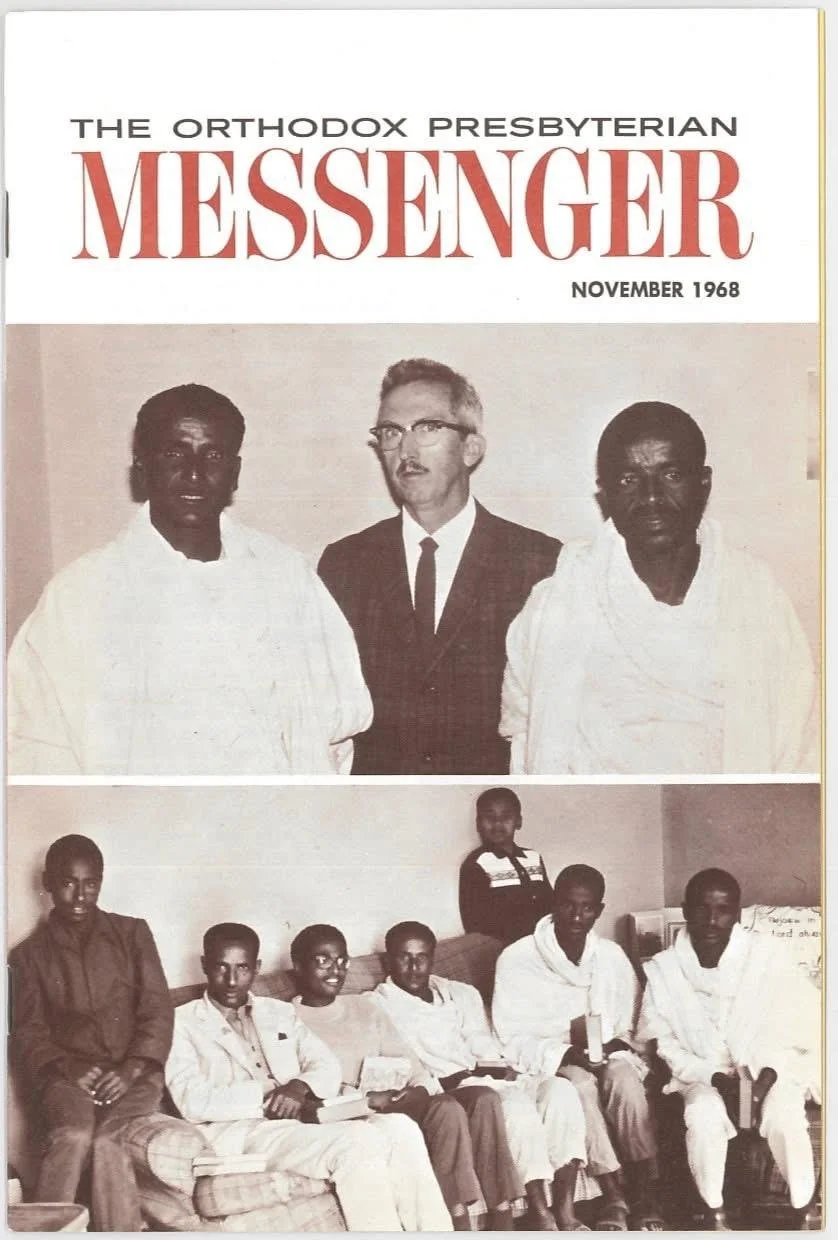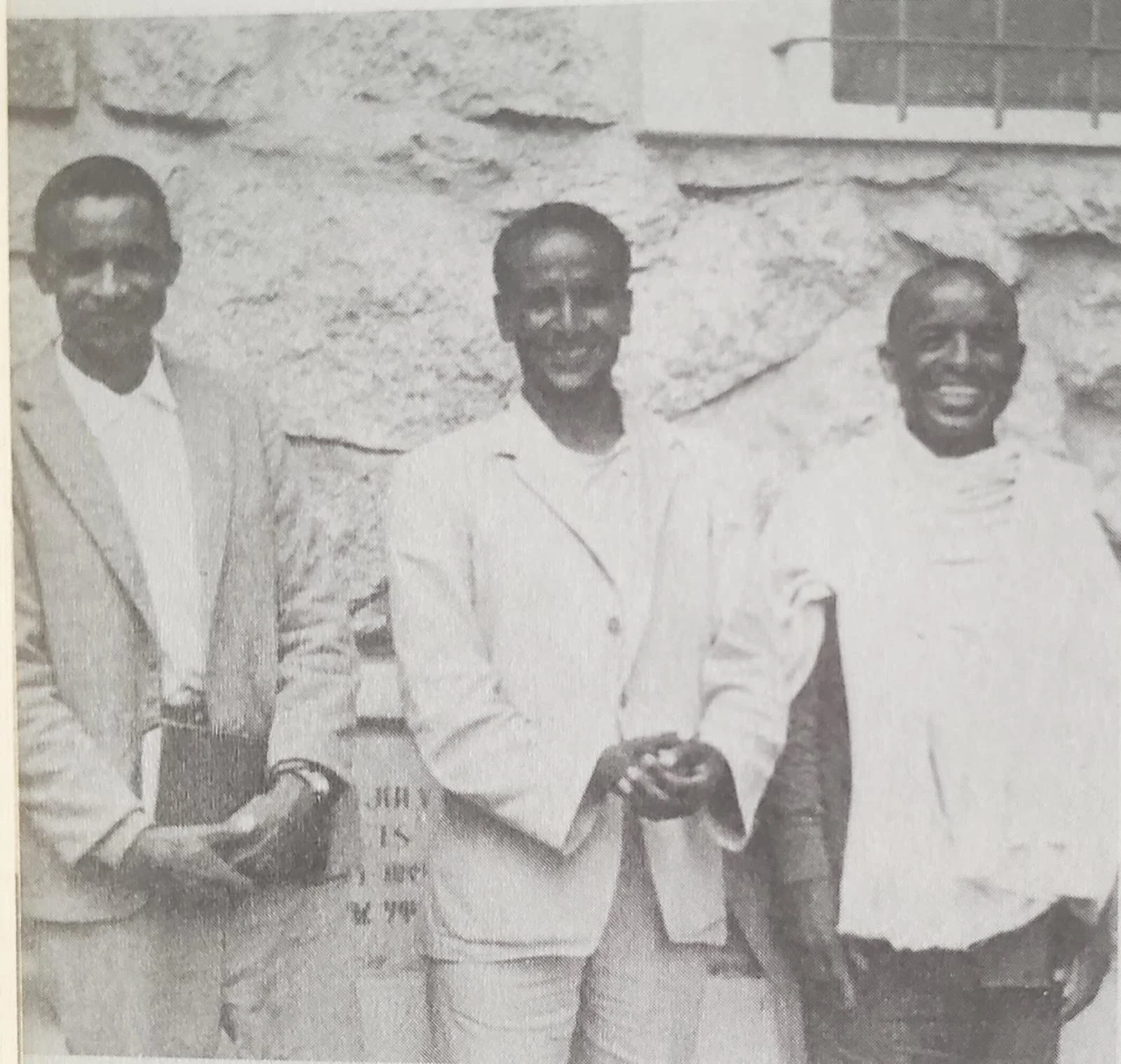The Old Fathers Who Stood Firm: Courage, Faith, and the Birth of Evangelism in 1970s Eritrea
~As told in The Orthodox Presbyterian Messenger
The Old Fathers Who Stood Firm: Courage, Faith, and the Birth of Evangelism in 1970s Eritrea
In the hills of Senafe, Adi-Keih, and Ghindae, a few faithful fathers carried the Cross with unshakable courage. Through hardship, rejection, and sacrifice, they planted seeds of faith that would one day grow into a living church. Their story is not just history—it is a testimony of God’s power to sustain His people in the face of trials.
Faith in Hardship
In the 1970s, the Gospel began to take root in the towns of Senafe, Adi-Keih, and Ghindae. It was a time of political uncertainty, religious opposition, and hardship, yet a small group of faithful fathers stood firm in their belief that the Good News of Jesus Christ must be shared. They faced rejection from neighbors, denial of burial grounds for their loved ones, and the weight of persecution. Still, they chose faith over fear, carrying the Cross with unwavering devotion.
Seeds of the Gospel
These were the pioneers of Eritrean evangelism—men and families who opened their homes to worship, who studied Scripture with missionaries under candlelight, and who walked miles across mountains to gather with other believers. Their courage and sacrifices became the foundation upon which later generations of Christians would stand. Today, we remember them not only as history-makers, but as living testimonies of God’s grace, perseverance, and the unbreakable strength of faith.
Haleka Tekle
After Aboy Qeshi Woldegebriel, Haleka Tekle was strongly drawn to the fellowship and was baptized into the church in 1963. As a beloved child, Wedu was baptized as a member. Haleka Tekle and Aboy Qeshi Woldegebriel suffered many hardships and persecutions in Afoma. Yet despite all the trials and pressures, they stood firm in their faith and bore witness to the truth with boldness. Haleka Tekle also wished that his family (household) would support the Cross (i.e., faith).
Gebre Yesus
In the 1970s, they came to our fellowship. One of them was Gebre Yesus. Gebre Yesus was a close neighbor and dear friend of Ato Araya. They shared Jesus Christ and the Gospel with them.
Haleka Hayle Teklehaymanot
Another who came with Gebre Yesus was Haleka Hayle Teklehaymanot. He used to visit continually with the family and the children. He was one of those who were zealous in their faith. When they were to celebrate Holy Communion, he would encourage that the Tabot (Ark/sacred tablet) be taken around during festivals. His occupation was farming and herding. For years he associated with Aboy Qeshi Woldegebriel and Haleka Tekle, followed the Sunday teachings, and at home joined the missionaries in studying the Holy Bible.
In the late 1960s, when Clarence Duff and Dora came monthly to Senafe—during that time when we lived in Ngebralu—if he could not come to our house, he would still bring the food prepared by the family for us. The Gospel was proclaimed. Salvation through Christ by faith, grace, and his kindness shone forth. The prayer called Qenishan Tselayti Mariam (“Hail Mary”) began to be reduced. In 1972 he openly began to follow Christ.
In early 1973, and again in 1974, Jim Miner used a mini-bus to bring all the Eritrean believers from Ghindae to Qoat’tit. Qoat’tit is a place along the Asmara–Senafe road, near the edge of the escarpment overlooking the plains. It was the place first preached at by Francis Mahaffy and Herbert Bird in May 1954. On both occasions the believers from Ghindae stayed for 3–4 days, visiting the surrounding villages, giving witness, distributing Christian literature, and showing films as part of their ministry.
From the early to mid-1970s, the political situation in Eritrea became very unstable. Later, when Ethiopia shifted from Haile Selassie to the Marxist-Leninist Derg, the Ethiopian government’s policy hardened against the (Eritrean) struggle. The missionaries, who had a “furlough” every five years to return to America for rest and to bring needed equipment, arranged their returns and responsibilities accordingly. When Francis Mahaffy departed for the last time in July 1968, the ministries in Adi-Keyh and Senafe were continued by the remaining missionaries under the leadership of the elders, namely Aboy Qeshi Woldegebriel and Aboy Araya.
From 1968–1974, visits were carried on with Mr. and Mrs. Duff, the Messrs. Miner, Steltzer, Dortzbach, and Mason. The annual Bible Conference that began in January 1968 continued until January 1976. In 1975–1976, because of the conditions, other missionaries could not participate. Christians from Senafe, M’nahn, the Adi-Keyh area, and Ghindae used to attend this conference.
Clarence Duff and Arlena, who were to return from America in the winter of 1967, were delayed because of responsibilities related to the birth of their child. In 1971, Clarence Duff intended to publish a book (he is the author of that book). After a year’s furlough, he published the book in his 70th year. In 1976, the fellowship that existed in Senafe and Adi-Keyh was as follows:
- Aboy Qeshi Woldegebriel with his wife and their sons Emanuel, Tsegay, and Elias.
- Ato Araya with his wife Itay and their six children (Alem, Azeb, Lete-Tsion, Samuel, Paulos, Yonatan).
- Haleka Hayle Teklehaymanot, Qeshi Gebre-Yesus, Qeshi Adhanom.
In total, the community in Senafe, Adi-Keyh, and Ghindae numbered 27 souls—that is, 21 members and 6 baptized children.
Around 1975, the fellowship began to be known as the “Faith in the Trinity Church.”
From February to April 1974, Steltzer gave training to the elders. Among those who participated were Ato Araya, Aboy Qeshi Woldegebriel, Haleka Kifle Maryam, and Amaha.
Later, as the political situation worsened, the mission service was forced to withdraw from Ghindae. Conditions of war intensified up to January 31, 1975. The Eritrean army pressed hard in Asmara and other major cities. After this, the American Embassy in Asmara decided to evacuate from Eritrea. Evacuation would be either by ship from Massawa to Mombasa, Kenya, or by air from Asmara to Addis Ababa. Many missionaries departed, while those with us (remaining) desired to stand firm and continue the vision. The final departure date was May 5, 1976.
The story recorded in this book covers 32 years (1944–1976).
Source
God’s Higher Ways by Clarence W. Duff
Gospel_of_the_kingdom, Jesus Christ
Gospel Mission
Timeline of Events (1944 – 1976)
A brief record of faith, perseverance, and the birth of evangelism in Eritrea.
1944 — Fellowship Roots Begin
The early seeds of the Gospel take root as faithful believers begin meeting and sharing the Word in the highlands of Eritrea.
1952 — Preaching Foundations Established
Missionaries Francis Mahaffy and Herbert Bird begin preaching and establishing fellowship locations across Senafe and Adi-Keih.
1954 — Qoat’tit First Preached
The message of Christ is proclaimed in Qoat’tit for the first time by Mahaffy and Bird, marking a key moment in local evangelism.
1963 — Haleka Tekle Baptized
Haleka Tekle publicly declares his faith through baptism, becoming one of the earliest local believers to join the fellowship.
1967 — Sara, Wife of Tekle, Passes Away
Despite loss and grief, the family continues steadfast in faith and service.
1968 — Leadership Transitions
After Mahaffy’s departure, local elders—including Aboy Qeshi Woldegebriel and Ato Araya—carry the mission forward.
1969 — Letter from Clarence Duff
Missionary Clarence Duff writes concerning the illness and testimony of Haleka Tekle, recording the trials faced by the early faithful.
1971 — Clarence Duff Publishes His Book
Duff’s writings document decades of ministry and God’s work among the Eritrean believers.
1972 — Haleka Hayle Teklehaymanot Follows Christ
Openly professes faith in Christ, strengthening the growing fellowship and inspiring others to join.
1973 — Gathering at Qoat’tit
Missionary Jim Miner brings believers from Ghindae to Qoat’tit for worship, teaching, and community outreach.
1974 — Training & Trials
Elder Steltzer trains local leaders as the political climate worsens and persecution increases.
1975 — War and Evacuation Plans
Conflict intensifies; the American Embassy prepares to evacuate missionaries amid growing instability.
1976 — Final Missionary Departures
The last missionaries leave Eritrea. The local fellowship, numbering 27 souls, continues in faith as the “Faith in the Trinity Church.”




